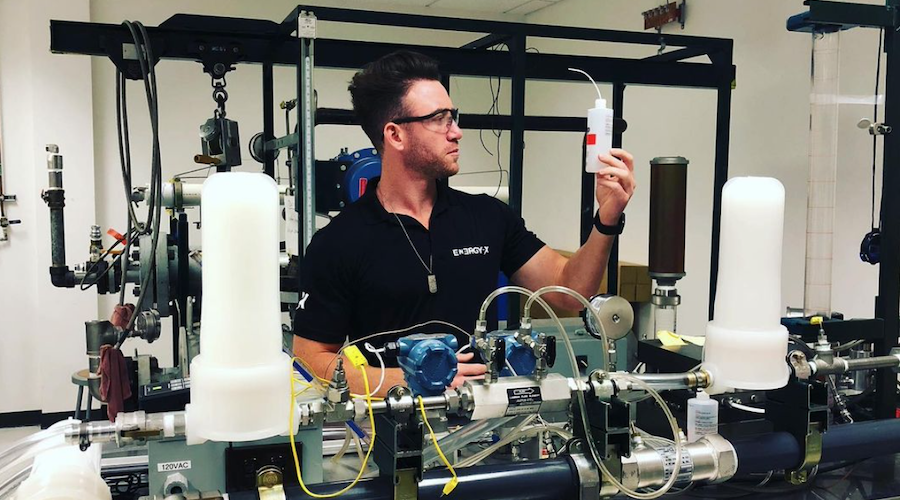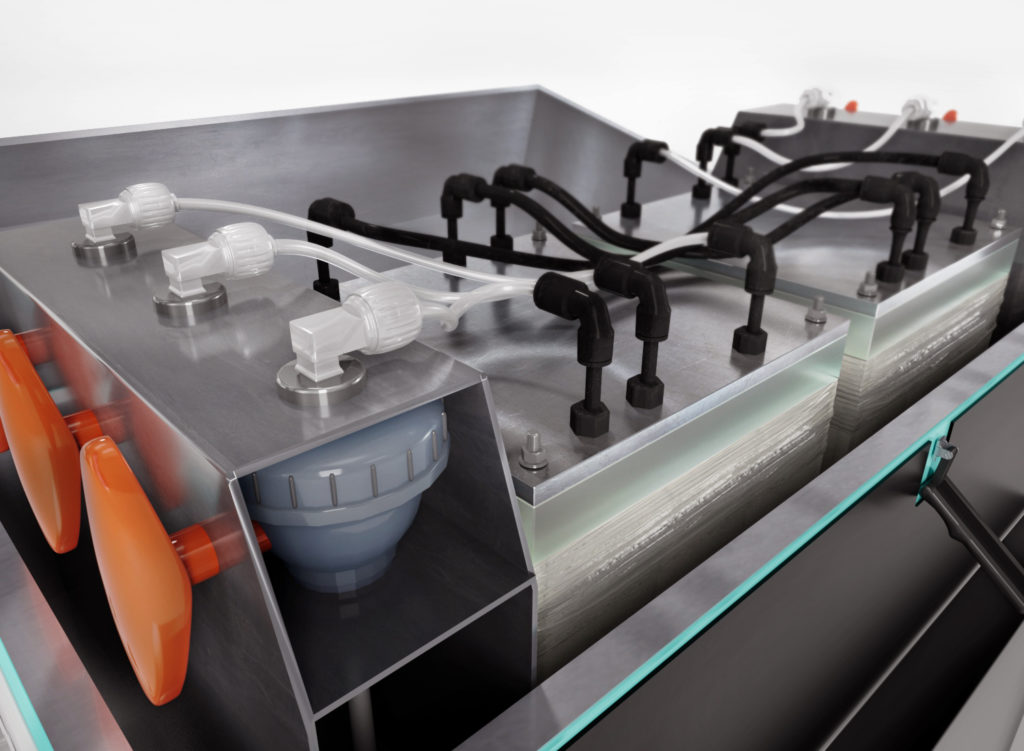Egan, 33, who made his fortune as an early investor in Tesla, buying in at $7 per share in 2013, has since advocated for the energy transition, and has even been touted as the next Elon Musk.
A serial entrepreneur who first gained notoriety as an NFL agent in his twenties, Egan went back to Austin, Texas and began hiring PhD’s specializing in lithium extraction technologies. He launched EnergyX, a company aiming to supply technologies for lithium extraction and processing for generation batteries, working with scientists on a ‘nanoparticle filter’ to boost lithium recovery rates.
EnergyX now owns 23 patents, and in 2019 began working with Dr. John Goodenough, Nobel Prize- winning inventor of the Li-ion battery, on developing the company’s Solid State Batteries. Dr. Goodenough is an advisor to the company and EnergyX sponsors his lab with funding under its Sponsored Research Agreement, Egan told MINING.com.
EnergyX’s initiatives have not gone unnoticed, featured in the New York Times and Forbes, and Egan was compared to Elon Musk by the BBC.
Back in Bolivia
Bolivian state-owned lithium company Yacimientos de Litios Banosolivi (YLB) oversees extraction of lithium from complex brines beneath the salt flats at approximately 4,000 metres elevation, but actual lithium production in Bolivia, a country where miners have been known to sacrifice llamas to appease the Gods, has long been a big possibility, but never a reality.
Former president Luis Morales declared a lithium mining offensive in 2017, which didn’t come into play.
In late 2020, however, Bolivia democratically elected a new president, Luis Arce, who vowed to rebuild the country’s battered economy.
In spring of 2021, EnergyX secured $20 million in financing to continue developing its direct lithium extraction (DLE) technology. According to EnergyX, this funding makes it the highest-valued direct lithium extraction technology company on the market, and the firm owns an exclusive, worldwide license to commercialize a process that uses an advanced nanomaterial filtering membrane called a metal-organic framework (MOF).
In the early steps of Arce’s administration, he initiated an open tender for international companies to submit proposals for their technology, and after receiving dozens of proposals, Bolivia held an international lithium seminar.
EnergyX was one of the US companies invited, and according to Egan, of the selected top 8 companies, four were from China, one was from Russia, two from the US and one from Argentina.
When the tender was announced, all the other companies had brine shipped back to their labs in their home countries. Energy X was the only company that was ready to deploy its technology, LITAS – a containerized direct lithium extraction (DLE) unit, – down to the field and start testing, Egan told MINING.com.
The pilot arrived in Bolivia on December 30, Egan said, and made it to the Salar in mid January. A group of EnergyX engineers went down that month and commissioned it and contracted local Bolivians to operate it.
“This is a new industry… ExergyX is a relatively small company, a start-up, and we’re the only company that sent a physical pilot down to the field, to the biggest lithium reserve in the world,” Egan said. “I could go do glass beakers in my lab all day with the brine that they send, but it’s all about proving it in the field.”

“We have some distinct competitive advantages, in that we’re the only company that our technology is complementary to existing infrastructure in ponds,” Egan said. “Everybody else is trying to treat the brine from the well-head. Why that’s an advantage for us, is because Bolivia has already spent $1 billion on their existing infrastructure.”
“They have a tremendous resource, and they’ve built out a lot of their own infrastructure. And we have the technology that can help them unlock it.”
Egan said YLB has built 50MW of power in the Salar, and that the evaporation ponds have capacity for 75,000 tonnes of lithium.
“They need the separation technology that EnergyX makes, because they have a lot of rain, which is counterproductive to evaporating and dilutes further, and [they] also have ‘terrible co precipitating salts, really high ratios of other salts, compared to lithium,” Egan said.
“That’s why they’re not producing – they have already built it all [but] Bolivia had closed borders, and wanted to develop the lithium themselves, and tried and failed for about 12 years.”
“They have these problems, so we came up with a solution that is complementary to their existing infrastructure with minimal capex. It can basically unlock their whole system.”
EnergyX’s pilot plant is testing, and then the company will scale it up to a demonstration plant. One full size commercial stack fits into one full size shipping container, Egan said, adding the next step is letting the pilot run for six months.
“We have tested the brine back in our labs, and it works on a lab pilot scale…Great results, great separations, great recovery for a week. It needs to work for six months. After that, I need the demonstration to work for six months.”

EnergyX has a lithium extraction unit in the pilot plant in Bolivia using membrane stacks – the membranes are what actually do the separation of the lithium from the other salt species that are found in the brine, Egan said.
He said one unit can produce about 3 tonnes of lithium per year, adding that the point of the pilot isn’t to produce a lot – it’s to prove it works over a six month period.
“So then, we scale up to the largest full size commercial stack of the membranes. One unit that can produce 300 tonnes. I’ve designed the whole system to be pre-fabricated, so we build these into containers domestically and then modular, so we can just ship them down.”
“Our whole goal is to try to unlock this huge treasure that they have, and hopefully see to it that the revenue that’s generated from that goes back into the economy and helps people. I don’t have the power to do that – that would be the Bolivian government – but what I can control is helping them produce the lithium,” Egan said.
“From there it’s just a matter of how many tonnes of lithium they want to produce…I think that this is a new Bolivia. I think perception can change – this new administration is a breath of fresh air.”




